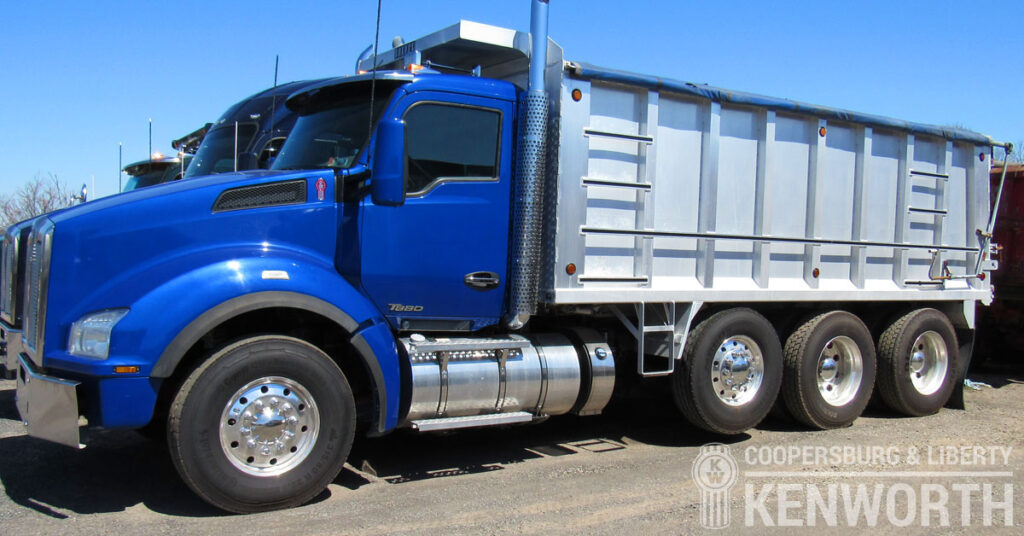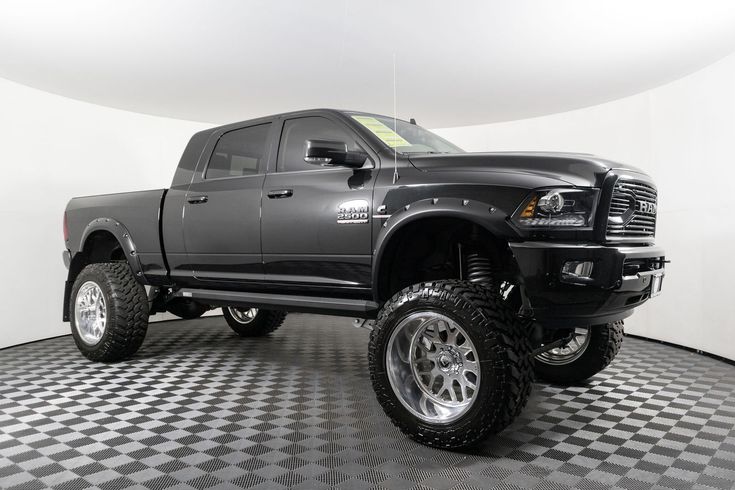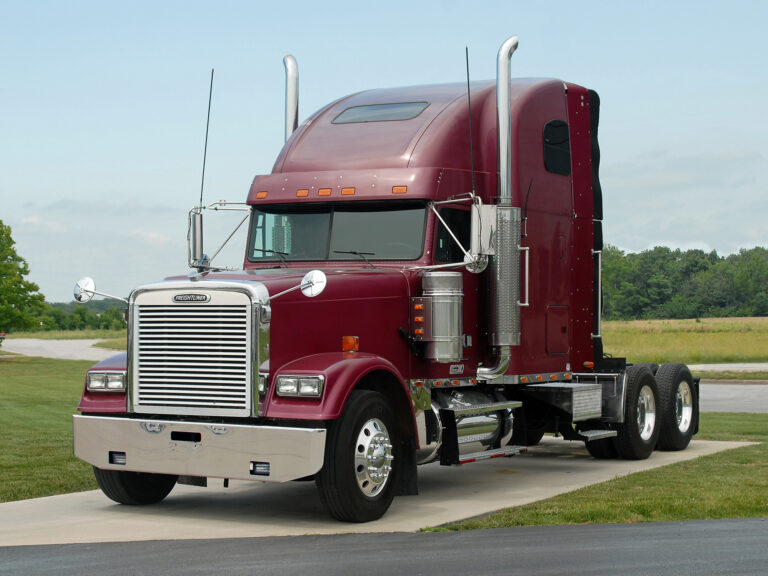How Many Yards Of Dirt In A Dump Truck? Unearthing the Essential Quantities for Your Project
How Many Yards Of Dirt In A Dump Truck? Unearthing the Essential Quantities for Your Project cars.truckstrend.com
Embarking on a landscaping overhaul, a construction project, or even just filling a low spot in your yard often leads to one fundamental question: "How much dirt do I need?" This seemingly simple query quickly evolves into a more complex one when considering the logistics of delivery: "How many yards of dirt are in a dump truck?" Understanding the capacity of a dump truck is not just about curiosity; it’s a critical piece of information that impacts your budget, project timeline, and overall success.
From preventing costly over-ordering to ensuring you have enough material to complete your job without delays, knowing the typical volume of dirt a dump truck can haul is indispensable. It’s not a one-size-fits-all answer, as various factors come into play, from the truck’s size and type to the density of the dirt itself. This comprehensive guide will unearth everything you need to know about dump truck dirt capacities, helping you plan your next project with precision and confidence.
How Many Yards Of Dirt In A Dump Truck? Unearthing the Essential Quantities for Your Project
Understanding Cubic Yards: The Standard Measurement
Before we delve into dump truck capacities, it’s crucial to grasp the standard unit of measurement for bulk materials like dirt: the cubic yard.
A cubic yard is a volume equivalent to a cube that measures 3 feet in length, 3 feet in width, and 3 feet in height.
- 1 cubic yard = 3 ft x 3 ft x 3 ft = 27 cubic feet.
Imagine a standard washing machine or a small shed; that’s roughly the volume of one cubic yard. This measurement is universally used in construction and landscaping for ordering and delivering materials like soil, gravel, sand, and mulch because it provides a consistent way to quantify volume, regardless of the material’s shape or how it’s piled. When you call a supplier for dirt, they will almost always quote prices and quantities in cubic yards.
Factors Influencing Dump Truck Capacity
While the "box" of a dump truck might look a certain size, the actual amount of dirt it can carry is subject to several crucial variables. These factors dictate not only how many cubic yards can be loaded but also what is legally and safely permissible.
1. Dump Truck Size and Type
Dump trucks come in various configurations, each designed for different hauling capacities and types of jobs. Their size is the primary determinant of their volume capacity.

- Single Axle Dump Trucks (Light-Duty): These are the smallest commercial dump trucks, often seen in residential areas for smaller deliveries. They typically have one axle in the rear.
- Estimated Dirt Capacity: 5 to 7 cubic yards.
- Tandem Axle Dump Trucks (Standard/Medium-Duty): This is the most common type of dump truck, featuring two axles in the rear. They are workhorses for a wide range of construction and landscaping projects.
- Estimated Dirt Capacity: 10 to 14 cubic yards.
- Tri-Axle Dump Trucks (Heavy-Duty): With three axles at the rear, these trucks are designed for larger loads and heavier materials.
- Estimated Dirt Capacity: 15 to 20 cubic yards.
- Quad Axle / Super Dumps (Very Heavy-Duty): These specialized trucks have four or more axles, allowing them to carry significantly larger and heavier loads while distributing weight more effectively.
- Estimated Dirt Capacity: 20 to 30+ cubic yards.
- Articulated Dump Trucks (Off-Road): While less common for standard dirt delivery to residential sites, these massive, multi-sectioned trucks are used in quarries, mines, and large-scale construction sites for off-road hauling of very large volumes.
- Estimated Dirt Capacity: Can range from 25 to 60+ cubic yards, but they are not typically used for direct consumer deliveries.

2. Material Density and Weight
The term "dirt" is broad and encompasses various materials, each with a different density (weight per cubic yard). A dump truck’s maximum capacity is often limited by weight, not just volume.
- Topsoil: Lighter, often containing organic matter. Can weigh 1,800 to 2,200 pounds per cubic yard (0.9 – 1.1 tons).
- Fill Dirt: Denser, often compacted soil or clay. Can weigh 2,200 to 2,700 pounds per cubic yard (1.1 – 1.35 tons).
- Clay: Very dense, can weigh 2,700 to 3,000+ pounds per cubic yard (1.35 – 1.5+ tons).
- Sand/Gravel: Even heavier, often exceeding 3,000 pounds per cubic yard.
A truck might have the volumetric space for 15 cubic yards, but if it’s hauling very dense, wet clay, it might hit its legal weight limit with only 12 cubic yards. Suppliers often adjust the volume based on the material’s density to comply with weight restrictions.
3. Legal Weight Limits (DOT Regulations)
State and federal Department of Transportation (DOT) regulations impose strict weight limits on commercial vehicles to ensure road safety, prevent damage to infrastructure (like bridges), and maintain fair competition. These limits vary by state and depend on the number of axles, axle spacing, and gross vehicle weight rating (GVWR) of the truck. A reputable supplier will always adhere to these legal weight limits, which means they might not fill a truck to its visual brim if the material is particularly heavy.
4. Moisture Content
The amount of water in dirt significantly affects its weight. Wet dirt is considerably heavier than dry dirt. If you’re ordering dirt after a heavy rain, expect the weight of each cubic yard to increase, which can reduce the total volume a truck can legally carry. This is a common reason why a "full" dump truck might deliver slightly less than its stated volumetric capacity, especially with heavy, wet materials.
Typical Capacities by Dump Truck Type (for Dirt)
Based on the factors above, here’s a general guide to how many cubic yards of dirt you can expect from different dump truck types:
| Dump Truck Type | Common Axle Configuration | Estimated Dirt Capacity (Cubic Yards) | Typical Use Case |
|---|---|---|---|
| Small/Light-Duty | Single Axle | 5 – 7 cubic yards | Residential landscaping, small fill jobs, tight access |
| Standard/Medium-Duty | Tandem Axle | 10 – 14 cubic yards | Most common for residential/commercial projects, general hauling |
| Large/Heavy-Duty | Tri-Axle | 15 – 20 cubic yards | Larger construction sites, commercial developments, significant fill |
| Super Dump | Quad Axle / Multiple Axles | 20 – 30+ cubic yards | Very large-scale projects, bulk material transport, highways |
Important Note: These figures are estimates for average dirt (like topsoil or fill dirt) under normal moisture conditions. Always confirm the exact capacity and quantity with your supplier based on the specific material you are ordering.
Calculating Your Dirt Needs: Practical Advice
Knowing dump truck capacities is only half the battle; you also need to accurately determine how much dirt your project requires. Under-ordering leads to delays and extra delivery fees, while over-ordering results in wasted material and disposal headaches.
- Measure Your Area:
- For a rectangular area, measure the Length (L), Width (W), and desired Depth (D) in feet.
- For irregular shapes, break them down into smaller, measurable rectangles or squares.
- Calculate Cubic Feet:
- Multiply L x W x D = Total Cubic Feet.
- Example: A 20 ft long x 10 ft wide area needing 6 inches (0.5 ft) of dirt:
20 ft x 10 ft x 0.5 ft = 100 cubic feet.
- Convert to Cubic Yards:
- Divide your total cubic feet by 27 (since 1 cubic yard = 27 cubic feet).
- Example: 100 cubic feet / 27 = 3.7 cubic yards.
- Add a Buffer:
- Always add 10-15% extra to your calculation to account for compaction, uneven ground, spillage, or minor miscalculations. Dirt will settle and compact over time, especially fill dirt.
- Example: 3.7 cubic yards + 10% (0.37) = ~4.1 cubic yards. Round up to the nearest whole or half yard for ordering, e.g., 4.5 cubic yards.
- Consider Project Type:
- Topsoil: Used for gardening, lawns, and planting beds. You typically need a shallower depth (4-12 inches).
- Fill Dirt: Used for leveling, raising grades, and backfilling. You might need significant depths and quantities.
- Compost/Mulch: Lighter materials, often ordered in smaller quantities or by bag for gardening.
Ordering Dirt: Tips for a Smooth Process
Once you know your quantity, follow these tips for a hassle-free delivery:
- Be Specific: Clearly state the type of dirt (e.g., screened topsoil, common fill dirt, sandy loam) and the exact quantity in cubic yards.
- Communicate Access: Inform the supplier about any potential delivery challenges: narrow driveways, low-hanging wires/branches, steep inclines, soft ground, or limited turning radius. This helps them send the appropriate truck size.
- Prepare the Drop-Off Site:
- Clear the area of obstacles.
- Ensure the ground is firm and level where the truck will dump.
- Lay down tarps or plywood if you want to protect your driveway or prevent the dirt from spreading too much.
- Mark the exact dump spot clearly for the driver.
- Confirm Delivery Details: Double-check the delivery date, time window, and any special instructions.
- Be Present (If Possible): If you can be on-site during delivery, it helps guide the driver and ensures the dirt is dumped exactly where you want it.
- Consider Multiple Loads: For very large projects, or if access is limited for larger trucks, it might be more practical to order multiple smaller loads.
Challenges and Solutions
Even with careful planning, challenges can arise.
- Challenge: Over-ordering or Under-ordering.
- Solution: Use the 10-15% buffer in your calculations. For large projects, consider getting a soil engineer or landscaper to confirm quantities. For critical projects, consider having a small amount extra on hand, or identify a local supplier for small top-up deliveries.
- Challenge: Truck Cannot Access Dump Site.
- Solution: Discuss access with the supplier before ordering. Send photos of your driveway/access if unsure. If a large truck can’t access, you might need to have it dumped at the curb and then wheelbarrow it, or hire a smaller local hauler.
- Challenge: Dirt Quality Not as Expected.
- Solution: Ask for a sample of the dirt before ordering, especially for topsoil. Clarify the specifications (e.g., screened, organic content, presence of rocks). Reputable suppliers will be transparent.
- Challenge: Delivery Delays or Wrong Drop-Off Spot.
- Solution: Get a confirmation number and delivery window. Be available by phone on delivery day. Provide clear, unambiguous instructions and mark the dump spot clearly.
Estimated Price Table for Dirt Delivery
Important Disclaimer: The prices below are illustrative and subject to significant variation based on your geographic location, the specific type of dirt (topsoil, fill dirt, sandy loam, etc.), the supplier, current market demand, and fuel costs. Always obtain a direct quote from local suppliers for accurate pricing.
| Dump Truck Type (Illustrative) | Estimated Capacity (Cubic Yards) | Estimated Price Per Cubic Yard (Range) | Estimated Delivery Fee (Range) | Total Estimated Cost (Small Load Example) | Total Estimated Cost (Full Load Example) |
|---|---|---|---|---|---|
| Small (Single Axle) | 5 – 7 Yards | $30 – $60 | $75 – $150 | $225 – $450 (for 5 yards) | $225 – $450 (for 5 yards) |
| Standard (Tandem Axle) | 10 – 14 Yards | $25 – $50 | $100 – $250 | $350 – $750 (for 10 yards) | $450 – $950 (for 14 yards) |
| Large (Tri-Axle) | 15 – 20 Yards | $20 – $45 | $150 – $350 | $450 – $1025 (for 15 yards) | $550 – $1250 (for 20 yards) |
| Super Dump | 20 – 30+ Yards | $18 – $40 | $200 – $500 | $560 – $1300 (for 20 yards) | $740 – $1700 (for 30 yards) |
Note: "Total Estimated Cost" examples include the delivery fee added to the material cost.
Many suppliers offer a reduced per-yard price for larger quantities.
Frequently Asked Questions (FAQ)
Q1: How much does a cubic yard of dirt weigh?
A1: The weight of a cubic yard of dirt varies significantly based on its type and moisture content.
- Dry Topsoil: ~1,800 – 2,200 lbs (0.9 – 1.1 tons)
- Dry Fill Dirt/Clay: ~2,200 – 3,000+ lbs (1.1 – 1.5+ tons)
Wet dirt can be 20-30% heavier than dry dirt.
Q2: Can I get half a dump truck load?
A2: Yes, many suppliers will deliver half loads, especially for smaller single-axle trucks. However, the delivery fee might remain the same or be only slightly reduced, making the per-yard cost higher for smaller quantities. Always ask your supplier.
Q3: What’s the difference between topsoil and fill dirt?
A3:
- Topsoil: The nutrient-rich top layer of soil, ideal for planting, gardening, and lawns. It’s often screened to remove debris. More expensive.
- Fill Dirt: Subsoil from deeper layers, often containing clay, sand, and small rocks. It has little organic content and is used for leveling, filling holes, and building up grades where vegetation isn’t the primary concern. Less expensive.
Q4: How much space do I need for a dump truck to unload?
A4: A standard tandem-axle dump truck typically needs at least 25-30 feet of overhead clearance (for the bed to lift) and 50-60 feet of linear space to maneuver and dump. Smaller trucks need less, larger trucks more. Ensure there are no low-hanging wires, tree branches, or structures.
Q5: Is it cheaper to buy dirt by the yard or by the ton?
A5: For "dirt" (topsoil, fill dirt), it’s almost always sold by the cubic yard. Aggregates like gravel or crushed stone are often sold by the ton because their density is more consistent and weight is a critical factor for structural applications. When comparing prices, ensure you’re comparing apples to apples (yard vs. yard or ton vs. ton).
Q6: Does wet dirt cost more?
A6: The price per cubic yard of dirt typically doesn’t change based on its moisture content. However, since wet dirt is heavier, a truck might be able to carry fewer cubic yards before hitting its legal weight limit. This means you might need more loads (and thus incur more delivery fees) for the same volume of wet dirt compared to dry dirt.
Conclusion: Planning for Success
Understanding "how many yards of dirt are in a dump truck" is more than just a numerical fact; it’s a foundational element of effective project planning. By grasping the nuances of cubic yards, appreciating the various dump truck sizes, and recognizing the impact of material density and legal weight limits, you can make informed decisions that save time, money, and headaches.
Accurate measurement of your project needs, clear communication with your supplier, and proper preparation of your delivery site are your best tools for a smooth and successful dirt delivery. With this comprehensive knowledge, you’re well-equipped to tackle your next landscaping or construction endeavor with confidence, ensuring you get exactly the right amount of dirt, right when you need it.






